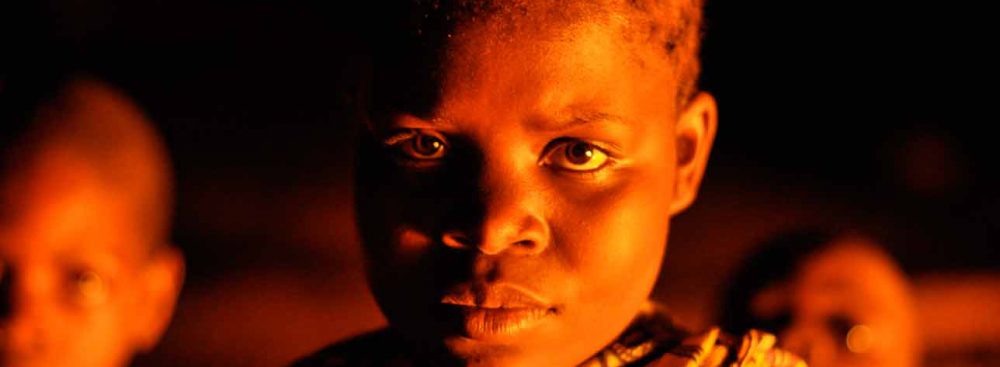The UN stabilization Mission in the Congo (MONUSCO), in cooperation with the Harvard Humanitarian Initiative (HHI) and the UN Development Programme (UNDP), has recently started a polling project on how Congolese perceive the security situation in the volatile East of the country. Amongst other things, participants are asked how secure they feel in different situations, who provides security to them and what could be done to improve this. MONUSCO plans to use this data to measure and improve its interventions particularly in regard to its mandate priority – the Protection of Civilians (PoC). This approach has the potential to be a revolution, representing a breakthrough in current practice and challenging established structures of power and decision-making within UN peacekeeping.
Generally, measuring protection is quite difficult because of the term’s broad definition, incorporating a whole range of overlapping issue-areas and activities. In Peacekeeping alone, PoC is conceptualized in three pillars: protection through political processes, physical protection, and creating a protective environment. Concentrating on one of these areas, such as physical protection, would make measurement possible, but would not live up to the holistic nature of the protection concept and it would also remain difficult to attribute impact as the other pillars also contribute to protection-related outcomes. Furthermore, spanning over the fault lines of security actors, humanitarians, human rights organizations, etc., there exists a lack of coordination between organizations result in unclear responsibilities and low accountability which in return increase difficulties with measurement.
Thus, asking the population about how protected they feel seems to be a practical way of dealing with these challenges and holds a lot of promise for improving peacekeeping interventions: First, measuring its protection activities would allow MONUSCO to see what works and adjust its approaches accordingly. Second, survey results would hold the mission accountable, increasing the pressure on strategic decision-making as well as staff performance. The results would also allow for more specific advocacy to those peacekeeping contingents and Troop Contributing Countries (TCCs) that are reluctant to effectively patrol and engage with armed groups. Finally, a better understanding of the threats that populations face and how they cope with them could be the basis for developing more appropriate strategies, mechanisms and activities.
There is, however, a problem related to the priorities of peacekeeping and the particular discrepancy between headquarters and the field. Critical voices state that neither in their assessment of needs, nor in their activities have Peacekeeping-missions been particularly oriented towards populations. Their top-down, macro-level interventions often seem like prescribed, blue-print like approaches that are unconnected to the local context (Autesserre 2010). In the case of Congo, the choices made seem to reflect other priorities than the security of local communities. MONUC’s strong support for the 2006 elections has, for example, provided a legitimate partner with whom the international community can work, but who has shown little inclination to improve the security and well-being of the Congolese population. In her recent book “Formal Peace and Informal War”, Zoe Marriage emphasizes that stabilizing the Congo has allowed the liberalization of the Congolese mining sector, whilst allowing patterns of exploitation, violent domination and abuse to continue. This stands in full contradiction to the primacy of PoC in MONUSCO’s mandate and its underlying rhetoric of human security, as well as to the many dedicated MONUSCO staff in DRC, who work countless hours to improve the lives of Congolese.
To explain these contradictions, it is helpful to emphasize that the decision-making processes in New York do not only take place far away from the realities on the ground, but play out according to unique contextual dynamics as well as varying political and organizational interests. Negotiations on peacekeeping mandates in the UN Security Council are, for example, fed by the information from reports, but are centered around political dynamics and priorities of member states. It is no secret that these strive for symbolic and political capital, thus sometimes agreeing to a resolution for reasons that are entirely unrelated to the case under discussion. Schlichte and Veit (2007) have compared similar donor processes to the potlatch ritual of Native Americans, where gifts are distributed because of social dynamics and status. Likewise, research by Stensland and Sending (2011, 2013) suggests that organizations such as OCHA, DPKO and UNHCR frame PoC in a way that reflects their organizational interests rather than the necessities the field.
It can thus be concluded that the inclusion of local realities and the increased pressure to react to them, as to be expected from successful surveys, goes against the established (power) structures of peacekeeping. This challenge is neither open nor widely acknowledged, but reacting appropriately to the survey results would mean that decision-making and priority-setting at headquarters would be curtailed by the realities and needs of the field. Those pushing the survey within MONUSCO should thus assure that the data is methodologically correct and relevant. In a second step, they need to publicize it widely, ideally also organizing events at Kinshasa and New York, in order to increase the pressure to react to it. However, for MONUSCO to engage in spreading the survey results might be somewhat counter-intuitive, as they seem to provide a pretty grim assessment of the mission’s protection activities.
